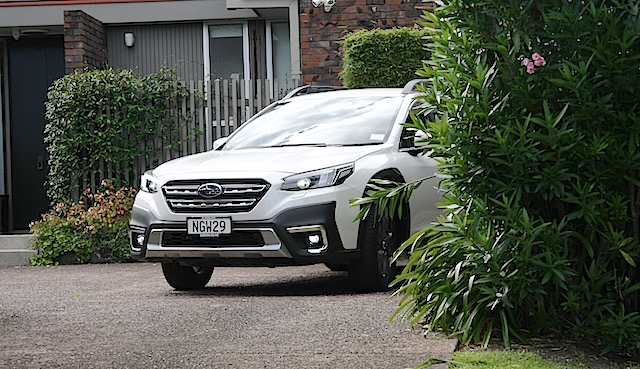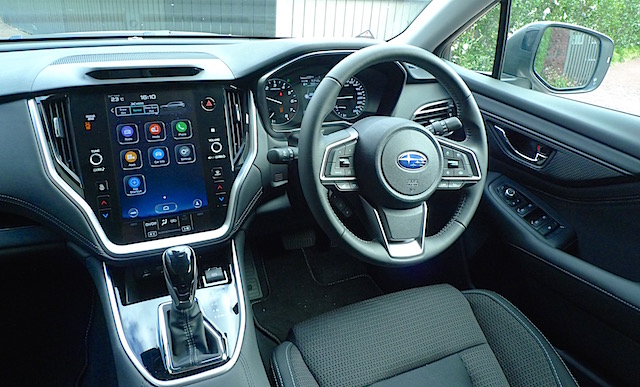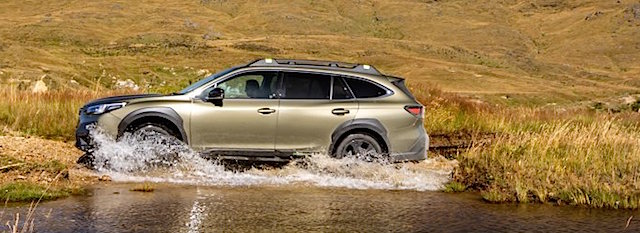
It’s not something that will get people butting heads, but there is a difference between grip and traction. A friend who was ambushed by thugs will tell you so.
So will those who study the physics of grip/traction. I mention this only because Subaru has an advertisement on an Auckland dealer’s wall saying its all-wheel-drive (AWD) system provides ‘more grip’.
Grip is all about the tyres. The action of one surface rubbing against another to add friction. Traction adds resistance against slipping or sliding. This is where AWD helps.
But when push comes to shove, it doesn’t much matter if torque goes to two wheels or four, for once the tyres’ grip limit is reached you and the car can end up in the trees.
It was AWD traction that saved American friend Molly from being likely raped and murdered in Papua New Guinea (PNG) 39 years ago.
I was the editor of one of the country’s two English daily newspapers. Molly wrote a fortnightly column for the paper. Her husband was a university lecturer.
She was driving her second-generation, four-speed manual AWD Subaru Leone station wagon from the coast to a town in the highlands, 300km away. It was a six-hour journey. Her big weimaraner dog was in the back seat.
PNG back then had its problems with gangs of murderous thugs, called ‘rascals.’ They liked to ambush cars on often isolated and badly maintained roads where progress was slow.
One hijacking method: They’d cut and strip tree branches of bark and lay them side-by-side on the road and covered lightly with mud and whatever looked innocuous. It rains a lot in inland PNG.
Tyres would suddenly lose grip on the slippery branches, wheels would spin, vehicles would slow or pretty much come to a stop. That gave thugs time to attack occupants.
Molly came upon such a trap. But the road was such that she had already cranked the manual Leone into AWD via a lever between the front seats.
She told later how men rushed the Subaru and how she put her foot down. Traction from all four wheels helped the tyres grab hold of both the branches and the road.
Molly kept the car pushing on, fast enough to leave the thugs scrabbling at it. Her dog was kicking up all sorts of hell in the back seat. Molly and it joined a convoy of vehicles on the return trip to the coast the next day.
There are no levers to pull and buttons to push on the latest Subaru station wagon, the Outback. Control centre for its X-Drive AWD modes – and many other things – is a touchscreen.
Subaru’s standout safety feature for almost 10 years has been Eyesight, a camera at the top of the windscreen. It’s a driver assistance/collision avoidance device. It’s recognised by road safety bodies worldwide as one of the best. Outback has the latest version.
I tried it out coming upon roadworks, a stretch that weaved left and right at a 30km/h limit through cones. On a corner going left, I deliberately steered towards cones on the right …
Eyesight instantly took control. It jammed on the brakes and turned the steering wheel to the left, the direction its road sign recognition software knew I should have taken. There was a collective ‘what the …’ from my three passengers.
“Did you stop the car or did the car stop itself,” one asked from the back seat. It was the car, I said. “Don’t like it,” he said. “Can you turn it off? I’d rather be in control of the car myself.”
No way in the world anyone would react as quickly as Eyesight, I said. Eyesight figured I’d lost control. I hadn’t. I had room to steer away from the cones, but it reckoned I was at the point of no return.
People once doubted the efficiency and safety benefits of anti-lock brakes and traction control. Both devices have since saved countless lives. Eyesight will too.
There are three Outback models, each powered by an updated (and slightly thriftier) 2.5-litre flat-four petrol engine good for 138kW/245Nm and mated to an eight-step CVT. My test car averaged 8.3litres/100km (34mpg) on a return Auckland-Whangarei journey.
The standard Outback is $49,990. Mid range Outback X is $54,990. Outback Touring is $57,990. Safety equipment (and it’s a long list) in all three is the same, but X and Touring get more goodies.
Touring gets Driver Monitoring System (DMS), face recognition software that customises settings – like mirrors and seat position – and monitors the driver for signs of drowsiness. It first appeared in the latest Forester. Subaru promises much more from DMS.
One curious omission from a brand that’s all about taking the unfamiliar road: the $49,990 entry-level model doesn’t get sat-nav. Why? Subaru HQ in Japan said sorry, no can do. You get Apple Play instead.


